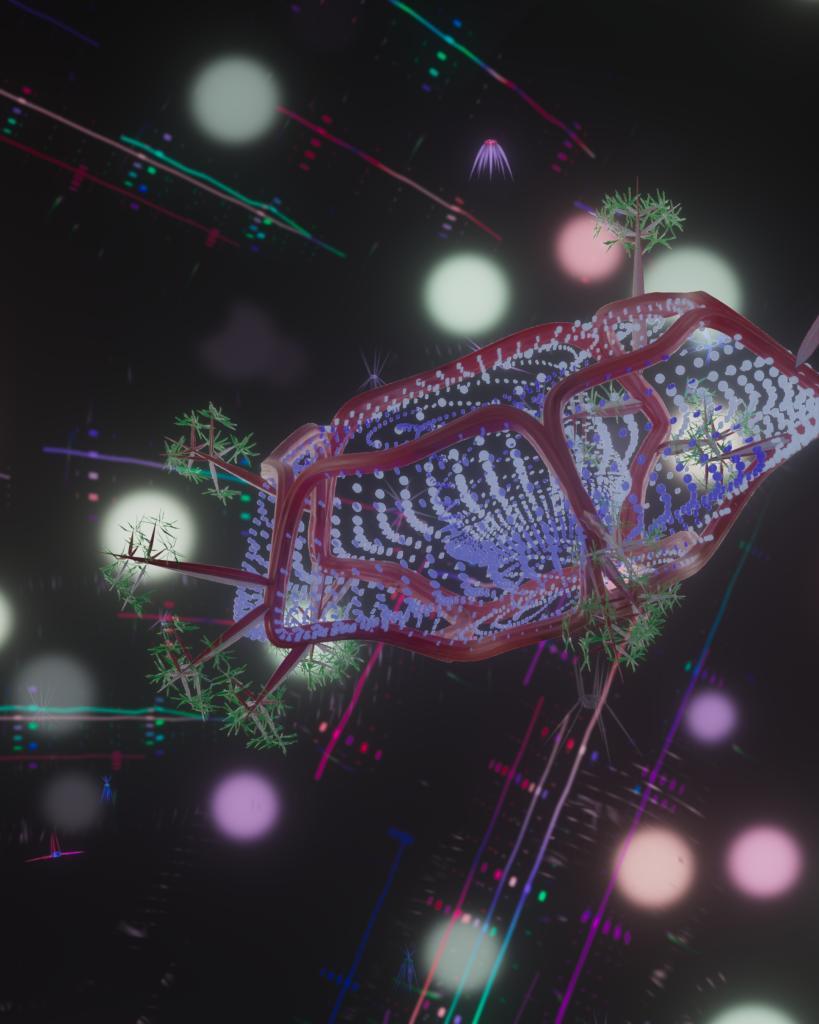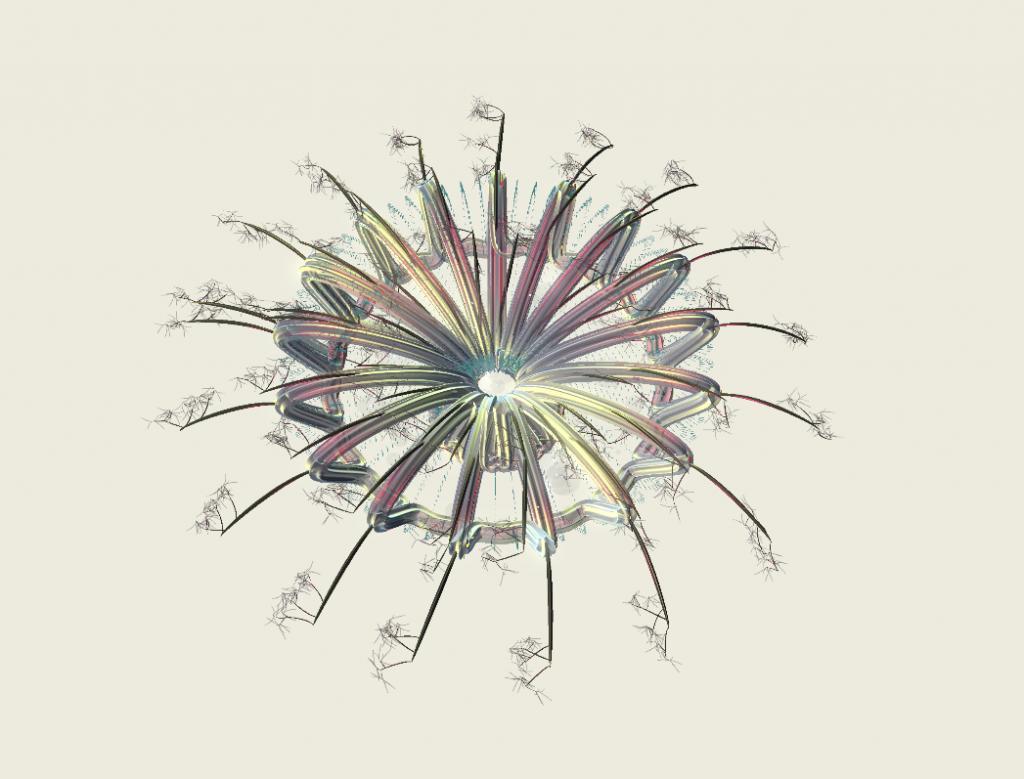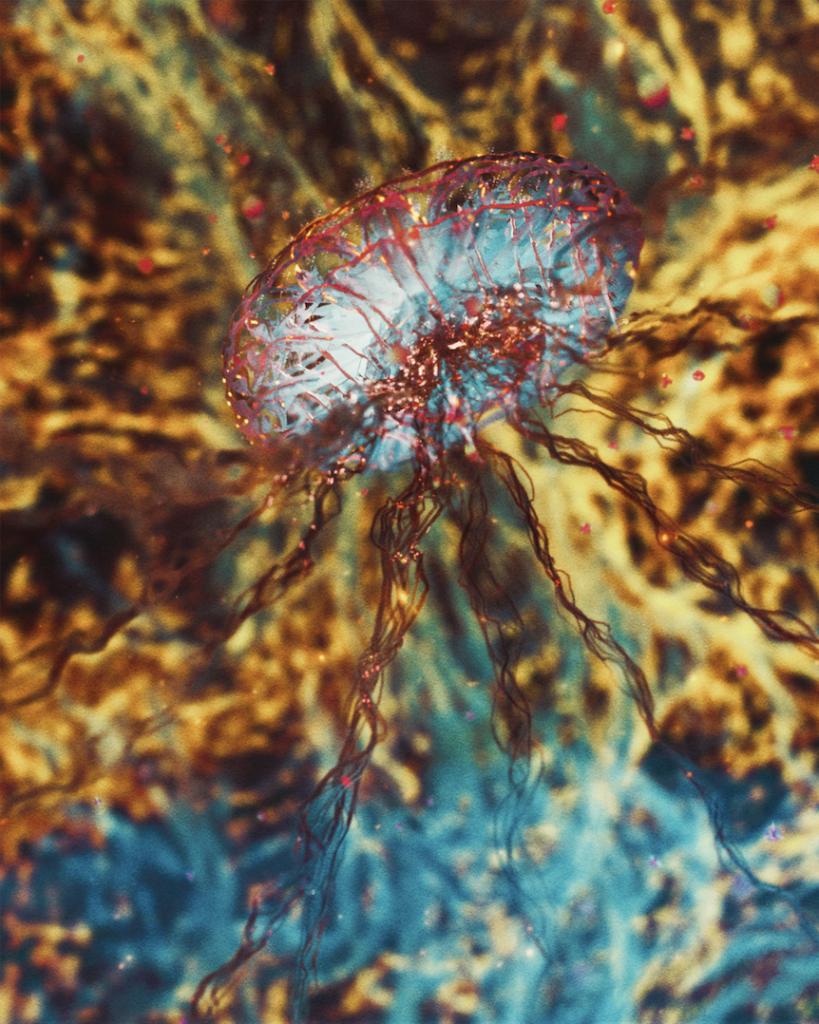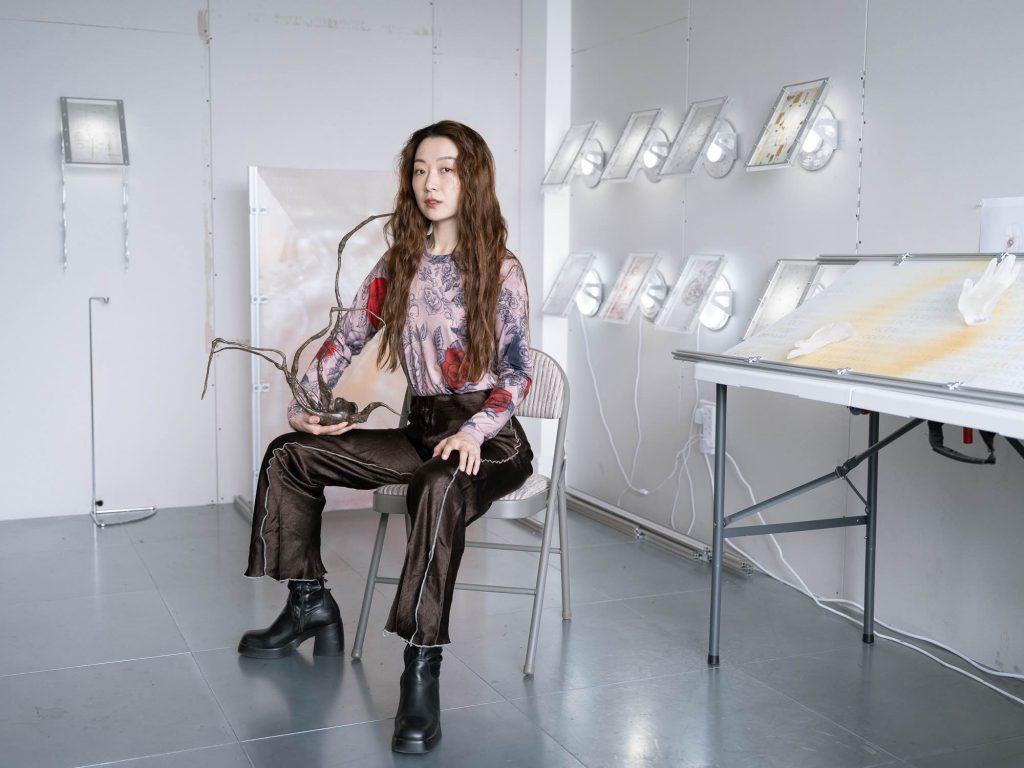(MENAFN- USA Art News) On October 6, the artist and engineer Xin Liu is debuting her immersive digital work , created in collaboration with the media artist and scientist Nan Zhao. For those lucky to witness, it will be akin to wandering an elysian floral field in another dimension – complete with an accompanying trippy ambient soundtrack.
The piece, which typifies Liu's compelling meld of art and science and will be displayed for free until October 8, is the debut commission of“Masterpiece of Tomorrow,” a new platform from Scottish whisky maker The Dalmore that champions today's visionary artists and makers creating the future of art, fashion, music, and design.
Venturing into the realm of culture and creativity is an exciting proposition from the 19th century heritage brand – and an especially ultramodern one, with The Dalmore's commission of an innovative digital experience by state-of-the-art artists like Liu and Zhao. Their 360-degree digital art journey is inspired by the essence of The Dalmore's latest 21 Year Old whisky, illustrating its complex evolution through the aging process and the passage of time while highlighting the enduring beauty of nature's perpetual transformation.
“This domain of art and science is finally getting its moment,” Liu says,“and it's only going to get bigger, because science and tech are such a part of culture.” Liu and Zhao's hypnotic will be the perfect prelude to Frieze London . The work will be presented at FLANNELS X , the innovative phygital exhibition space located at British luxury retailer FLANNELS' Oxford Street London flagship.

inhabiting the 'Cyberspace' environment in Liu and Zhao's new work. Courtesy of the artists.
So, what are anyway? Art lovers and microbiologists will rejoice at Liu and Zhao's creations. Their ongoing motifs are algorithmically generated flower-like forms that resemble a cross between real-world Lycoris plants and microscopic organisms.
The Dalmore commission, produced in partnership with Artnet, caps off a string of career highs since the multihyphenate Chinese artist relocated to London in 2022. A celebrated project at Pioneer Works in Brooklyn was followed by an International Artist-in-Residence at Artpace in Texas, which concluded with an exhibition of Liu's new oil-based work . Next month she'll debut a major commission in Shanghai at West Bund Art & Design fair, and she is prepping for a solo museum show in Los Angeles for fall 2024. All the while, she maintains curatorial and advisory roles at both the MIT Media Lab and the LACMA Art + Technology Lab .
Liu took a short break from preparing her piece to connect with Artnet about the work.
Where did this project with The Dalmore begin?
I had many deep conversations with the brand about perpetual motion. The concept makes so much sense when thinking about the craftsmanship involved in whisky making and how the liquid is constantly changing. It's really beautiful. They even showed me how this microorganism in the whisky changes colors through the process of fermentation.
So, it was never just about the whisky – I'm responding to the craft. The topic of perpetual motion felt quite connected to a lot of the work I do. Previously, I've done projects dealing with satellites perpetually orbiting the Earth even after they're decommissioned. I also created a generative work called , which really fits with this whole topic and the process of making whisky, and thus transformed into the piece for this project.
Can you describe the concept for your work?
The piece, , is a continuation of , a series I created in collaboration with Nan Zhao, an amazing computer programmer I met in grad school at the MIT Media Lab . We created last year as an ongoing generative art project.
is inspired by German biologist Ernst Haeckel's illuminating illustrations on biological evolutions. Combining the visual language of microscopic organisms and flowers, the artworks aim to represent the intricacies of life and how it constantly evolves. Though Haeckel was a biologist, his drawings felt otherworldly and are this wonderful visualization of a microbial world but at a scale that humans can perceive. It's a perfect match for this conversation with The Dalmore about the fermentation process in whisky making, with all its bubbly activities and imperceivable worlds within the casks.

One of Liu and Zhao's computer-generated . Courtesy of the artists.
Tell us more about how you created .
features floral-like forms generated by code. What makes really exciting is that instead of designing each of these flowers one by one, we created this algorithm that can literally generate thousands of different varieties. Since we're able to mathematically define and adjust the curves of each flower, rather than creating 2D images, which are very common in generative art, we're creating 3D works in a way that is all programmable.
What an incredibly cool, complex work. How do all the pieces come together?
Though the process is rather standardized, it's exciting to start with a basic model we generate. We didn't have to stretch a model, like in the old days. Everything is coded and based off an algorithm. I really like that part about it.
There's also something very natural to this process. In a sense, the computer, through the logic of how a terrain would behave and how a flower would grow, starts creating shapes and forms in a virtual space. This responds to the topic of perpetual motion and the idea of planting a seed, similar to fermentation starters. It's quite exciting to be able to work in a virtual space in this way.

A still from the 'Lava' sequence of . Courtesy of the artists.
How will come to life in London?
The FLANNELS X space is huge and entirely wrapped with floor-to-ceiling LED screens. I wanted to feel like I was creating an immersive world, so we worked with a team of independent CGI artists to generate landscapes based on the color palette and features of these Lycorises flowers.
While we were designing the algorithm, we categorized the Lycorises flowers into different characters based on their environment. For this new show, we have three stages: 'Lava,' which is hot, potent, and intense with all reactions; 'Alien Desert,' which is more gray, dusty, and airy; and 'Cyberspace,' which features a sunrise sequence inspired by outer space and virtual worlds.
What else will the experience feel like?
My digital work will run for about four minutes and will feature music by this amazing musician, 33EMYBW . I've always loved her work. It's abstract electronic, and we mapped the environments with the sound. So, it's very much an audiovisual experience.
Once you enter the space, you can really start at any point, because the work is very continuous and loops back on itself. You could have the full experience within four minutes, but we have so many visuals going on that you will be able to see different things by staying longer for repeated viewings. The work also fills the entire room, so it's hard to see everything at the same time.
You'll see this flower growing right in front of you, human size-or even bigger. It's very dreamy. It's going to be really fun. Even a little bit dance-y. I wouldn't say it's meditative. You'll definitely want to open your eyes and look at everything. It's going to be great to take pictures with. I made sure there are enough lights for the audience to be able to interact with the piece!

Xin Liu in the studio. Courtesy of the artist.
What is the connection between flowers and whisky?
We drew from the color palette, especially the amber tones in The Dalmore. I also added fluidic animations. It's not like the Lycorises flowers are in water, but you feel like the atmosphere is a bit stickier. They're not flying off in wind or something. It's like a denser air.
But I was really inspired by fermentation, this color change in the microbes from green to yellow as they are slowly dying. We incorporated that color change in the show as part of the story, when the flowers are going through a transitional rebirthing process.
The computer-generated flowers are completely unique to this show. We'll have around 50 different ones. I wish we could do more. We can generate as many as we want, but the challenge here is actually on the traditional CGI part because the software cannot handle rendering so many in such a big scene. Each flower is so complicated, so the files get really heavy.
MENAFN03102023005694012507ID1107181745